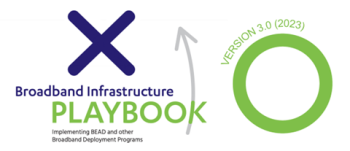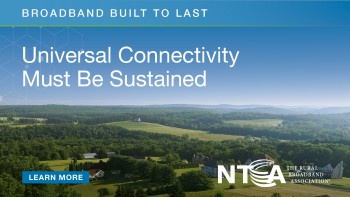As we find ourselves flipping the pages of the calendar to the last month of the year, aside from wondering where in the world the year 2023 has flown off to, we also have some key deadlines approaching that I felt it important to highlight.
First and foremost, 56 states and territories are all hustling to finish their state plans for submission to the National Telecommunications and Information Administration (NTIA). I’m not sure that either of those key parties - state broadband offices or NTIA - are expecting much of a holiday vacation this year but hopefully good work and broadband deployment will come from these efforts.
NTCA Executive Vice President Mike Romano and I had the opportunity to do a little bit of catch up with the NTIA team this week to compare notes and exchange ideas on what it will take to ensure that community-based providers have the opportunity to fully participate in Broadband Equity, Access and Deployment (BEAD) program funding, especially in areas where their expertise, rich history and community focus will really be a game changer for unconnected Americans.
Sitting down with NTIA Administrator Alan Davidson, Doug Kinkoph, associate administrator of NTIA’s Office of Internet Connectivity and Growth, and Lukas Pietrzak, special policy advisor for broadband, Mike and I found the hour flew by as we touched on mapping, state plans, high-cost areas and the definition of extremely high-cost areas, matching funds, accountability and efforts to streamline regulatory burdens. All that and more. Whew. It was a lot to cover, and we appreciated how the NTIA team has been and continues to be so mindful and thoughtful on how to thread some needles to ensure the needed integrity for this $42.5 billion program is maintained while not becoming so overly prescriptive that community-based providers find the program simply too cumbersome to bother with. The letter of credit flexibility recently embraced by NTIA is a good example of a needle well threaded, indeed.
Additionally, it was timely to raise with the NTIA team how pending USF court cases could have a devastating impact on rural deployment and affordability, far beyond even the impact of the very important Affordable Connectivity Program. All of this talk about billions of dollars being invested becomes a waste of time and effort if a court decision undermines the long-running USF programs that are key to the sustainability of rural deployment efforts. I was truly blown away by a recent NTCA survey of more than 60 member companies that showed that over 80 percent of deployment plans for 2024 and 2025 would be held back and that on average, rural consumers could have to pay an additional $100 or more per month -- and that is assuming that existing consumers aren’t forced to drop their service due to loss of USF support, pushing costs even higher. These are real impacts and nothing that billions of dollars in grants can do to create a feasible business case for building broadband to those areas that are already the hardest and most expensive to serve. It was good to rope a key federal agency in on what might be taking place on the judicial front as NTCA continues to launch our “Broadband Built to Last” campaign, which aims to educate policymakers and the public on the critical role the USF plays in getting and keeping rural consumers connected to high quality, affordable broadband service.
The campaign features messages promoting the importance of a sustainable USF, which will appear in the Axios Tech section, Axios Pro Tech Policy newsletter, Communications Daily and the Politico Tech section throughout November. Additional plans are already underway for 2024.
NTIA has quite a challenge ahead. The mandate from Congress with the bipartisan IIJA was to connect all Americans. NTCA members know better than nearly anyone else in the industry what a heavy lift that will be. But to succeed, NTCA members will need to have a seat at this table.



